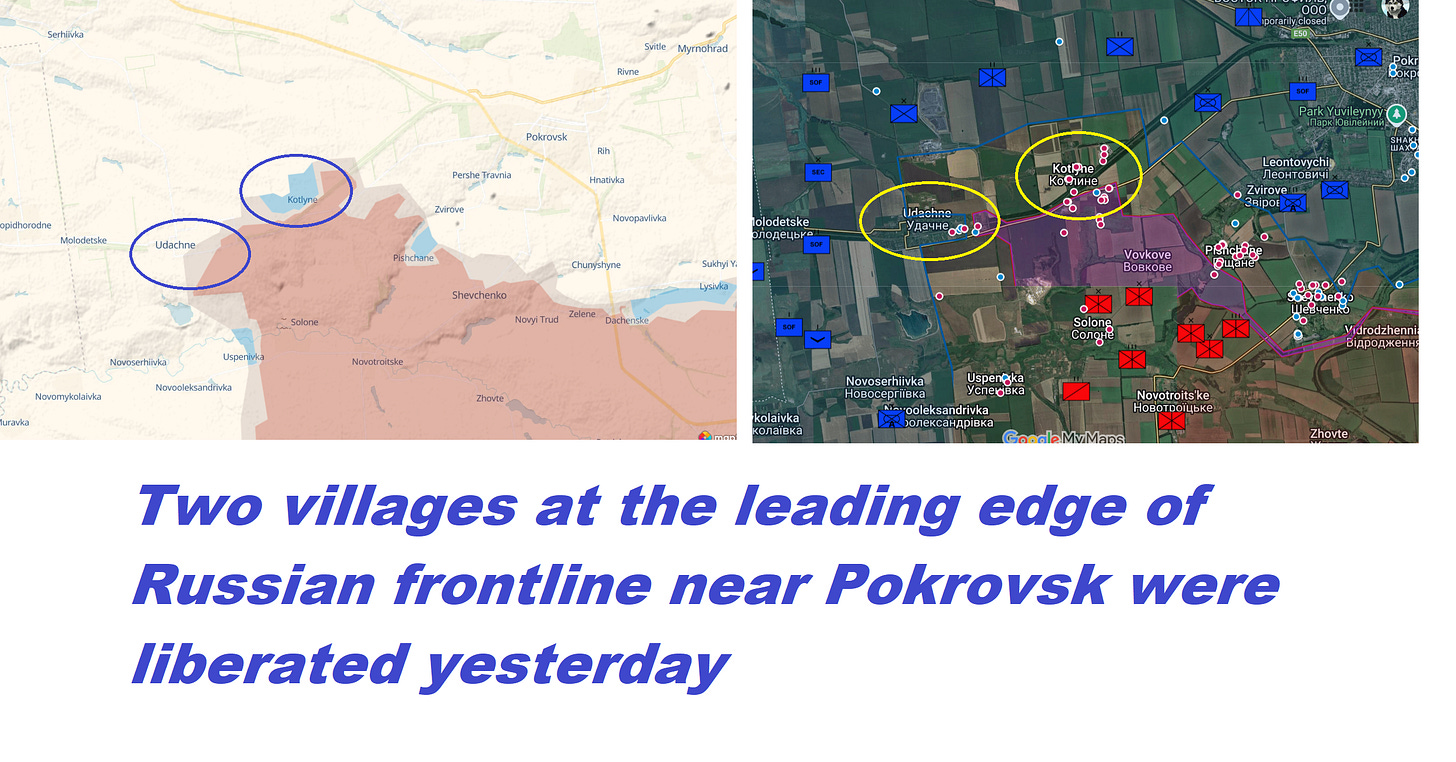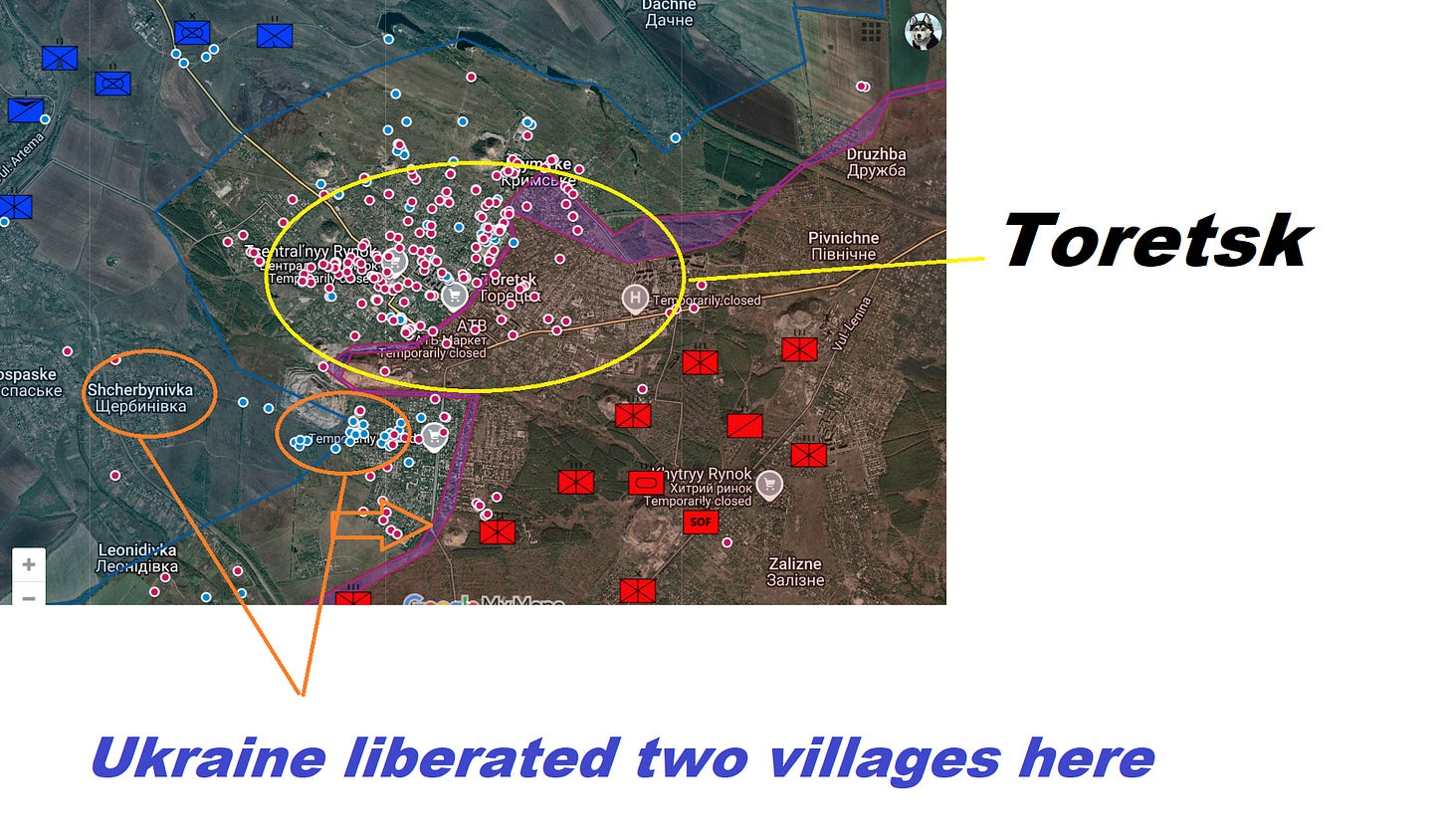Ukraine Counterattacks Across the Front: Liberates Settlements from Pokrovsk to Belgorod
Syrski Begins Testing Key Points Along the Russian Line
Russian forces attempted a border incursion near Kursk, aiming to push toward Sumy. But Ukraine’s Commander-in-Chief, Oleksandr Syrski, had other plans. He swiftly pulled his troops back from Kursk, cutting off the Russian advance—then flipped the script. Syrski ordered Ukrainian forces to cross into Russia’s Belgorod region, daring the Kremlin to redeploy its northern grouping into exposed territory.
Moscow tried to play it cool. But instead of a limited raid, Syrski expanded Ukraine’s footprint across a 20-kilometer stretch inside Russian territory—signaling this is the beginning of something bigger.
After weeks of inaction, Russia is finally reacting to Ukraine’s surprise incursion into Belgorod. They had little choice—Syrski is deliberately using the delay to render swathes of the Russian border defenseless, advancing village by village, kilometer by kilometer.
According to the Institute for the Study of War (ISW), “Russia redeployed border guards, Chechen Akhmat forces, elements of the Russian Northern Grouping of Forces, and elements of the 155th Naval Infantry Brigade (Pacific Fleet) to respond to the Ukrainian attacks in northwestern Belgorod Oblast.”
And that’s just the beginning. Ukraine is dead serious about the Belgorod salient. When Russian commanders tried to deploy helicopter gunships to halt the advance, Ukraine shot down four of them. HIMARS strikes have already taken out multiple command posts in the sector.
As Russia’s Northern Grouping still hunches over planning tables trying to respond to Belgorod, Syrski opened a new front. Ukrainian forces have launched a massive counteroffensive near Pokrovsk—home to lithium—and Toretsk, which sits atop key coal reserves.
Ukraine has liberated the villages of Udachyne and Kotlyne near Pokrovsk. If Trump and his envoy Steve Witkoff are truly concerned about the welfare of Russian troops, they might want to advise President Zelensky to tread carefully—because at this rate, there won’t be many Russian soldiers left in the Pokrovsk and Toretsk salients to worry about.
But it’s Toretsk—the strategic coal mining town—where Russian forces now face their most serious crisis. For the past five weeks, Syrski had been pressuring the town with a direct frontal push. Yesterday, that changed.
In a sharp tactical pivot, Ukrainian forces shifted to an envelopment operation, flanking the town and threatening to encircle the Russian garrison. What looked like a grinding offensive has turned into a trap—and Russian troops in Toretsk are now staring down the prospect of isolation.
After intense fighting, Ukrainian forces liberated Shcherbynivka and Leonidivka—two key villages east of Toretsk. Their capture tightens the noose around the town, giving Ukraine control of the high ground and key approach routes. The envelopment is no longer theoretical. It’s unfolding in real time.
Ukraine has shattered the left flank of Russia’s defensive line around Toretsk. The collapse is no longer a risk—it’s a reality. Russian commanders are acutely aware of the danger they’re in.
According to multiple Ukrainian military bloggers, Russian forces—facing mounting pressure—have resorted to using chemical agents in a desperate attempt to halt the Ukrainian advance. If confirmed, it would mark a dangerous escalation and a clear sign of just how rattled Moscow is by the pace of Syrski’s offensive.
But the situation looks dire—for Russia. Their force density in the area doesn’t appear remotely sufficient to halt the Ukrainian advance. If Syrski decides to hit the gas, Russian troops in Toretsk could soon find themselves fully encircled.
Perhaps Donald Trump and his ever-wise envoy Steve Witkoff will reach out to President Zelensky and ask Ukraine to show mercy—maybe even to stop the encirclement altogether.
But I don’t think Syrski will go for a full encirclement. It’s far cheaper, and far more pragmatic, to let the Russians withdraw under pressure than to trap and annihilate them. That’s likely why, even as Ukrainian forces advance on the enemy’s left flank, Syrski is keeping a corridor open—inviting the Russians to leave on their own.
Still, one key data point stands out—and it changes everything:
The casualty numbers you're seeing above used to hover above 1,600 per day in December 2024 and January 2025. That’s when Russia was still launching mindless, grinding assaults to advance into Ukrainian territory. But those offensives have stopped. Russian forces are exhausted. Their reserves are depleted compared to just two months ago. Now, they’re catching their breath—shifting from attack to defense, concentrating on fewer fronts, and trying to hold the line through “active defense.”
Commander-in-Chief Syrski senses this moment. That’s why he’s counterattacking—across the entire frontline. He’s quiet in the south, probing in the northeast, extremely active around Donetsk, and going full throttle in the north. But crucially, he’s not overextending. He’s chosen his battles with surgical precision.
It's Pokrovsk.
It's Toretsk.
It's Kupiansk.
And it's Belgorod.
Each one is a pressure point. And one by one, Syrski is pressing down.








This is really positive news. Thanks for filling us in. This is what Ukraine should be doing--pressing their carefully prepared advantage. I am not at all in favor of peace talks. This is exactly the time to counterattack and regain as much territory as possible. The Russian army is at its weakest, and Ukraine---and the EU is getting stronger by the day. Nothing less than a complete defeat will stop Russia.
GREAT ARTICLE!!❤️ if Americans had these facts, there’s no way they could deny supporting Ukraine